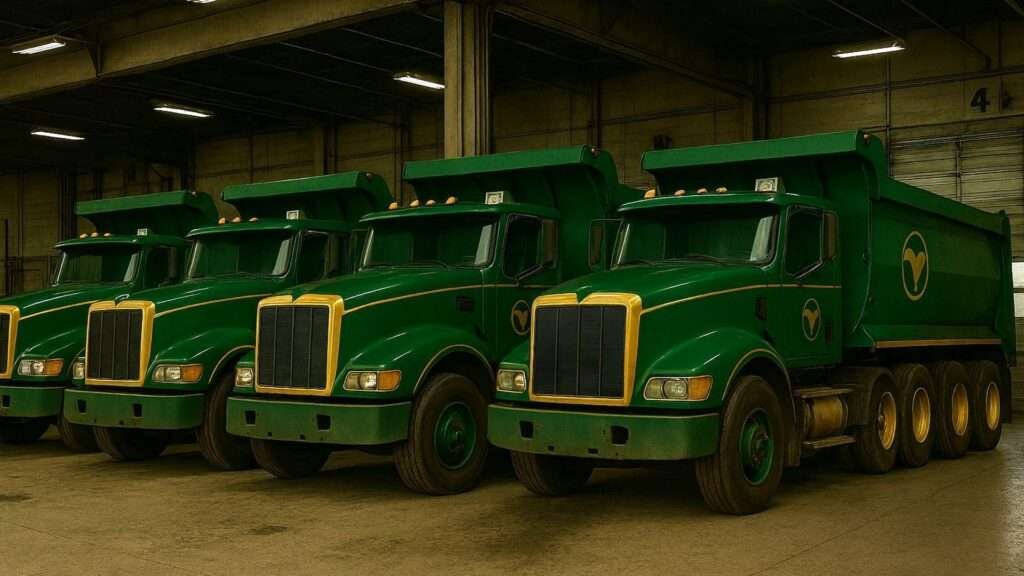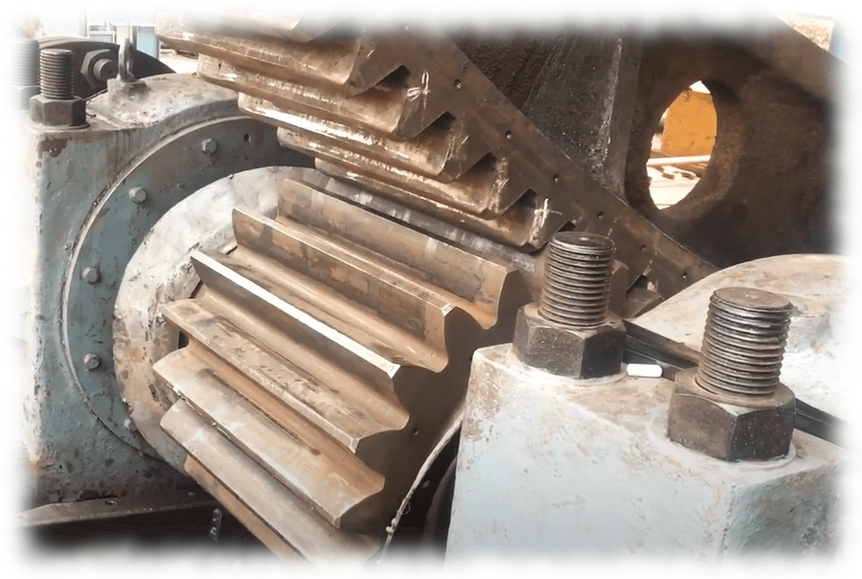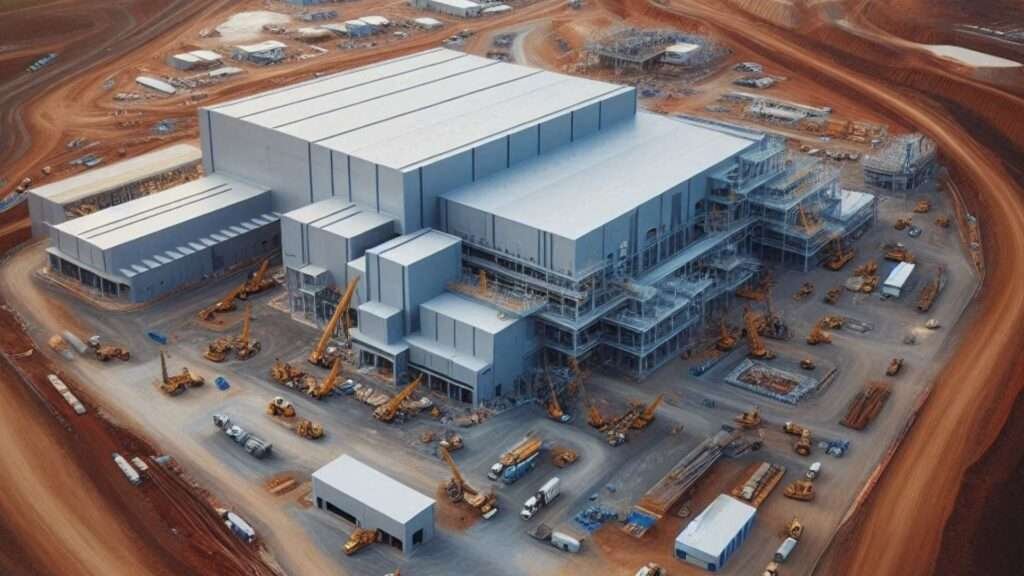Highway Dump Truck Maintenance Manual / CMMS Guide
Disclaimer.
This content is for informational and educational purposes only. It reflects the author’s thoughts, ideas, views, personal experiences and research and is not professional mechanical, engineering, scientific, automotive, technical, legal, or business advice.
The author is not a certified mechanic, engineer, or truck maintenance professional. Always consult manufacturer specifications, follow all safety regulations, and seek qualified professional guidance before undertaking maintenance or repairs. No warranties are given.
The author accepts no liability for outcomes resulting from use of this material. References to brands or products are illustrative and do not imply endorsement. By using this article, you accept these terms.
See the full Legal Disclaimer on this website for more details.
About This Article.
This article explores how I believe a Computerized Maintenance Management System (CMMS) can transform highway dump truck maintenance from reactive repairs into structured, data‑driven asset management.
While some core technical procedures remain consistent across brands, a CMMS can add structure, automation and analytics to improve fleet reliability, reduce costs and elevate safety performance.
Drawing on topics covered across the 15 sections, from safety integration and preventive/predictive strategies through to KPIs, continuous improvement and emerging technologies, I hope that you’ll find it to outline both standard CMMS capabilities and advanced features such as IoT integration, telematics and AI/ML analytics.
These advanced options often require custom development via a User Requirement Specification (URS), with adoption guided by operational needs and return on investment.
Important Note:
Maintenance philosophies differ, and CMMS platforms vary greatly in built‑in functionality. The concepts presented here are possibilities as thought up by the author, not universal standards.
Where specific functionality is absent in standard configurations, most platforms allow for tailored solutions through URS‑driven customisation , typically involving additional cost and implementation effort.
Top 5 Takeaways And Where To Find Them.
# | Key Insight | Related Section(s) |
1 | CMMS Transforms Maintenance Strategy: Moves maintenance from reactive fixes to proactive and predictive programmes that boost uptime and asset life. | 2.0 Maintenance Strategy Framework |
2 | Safety Integration is Central: Embedding PPE, safety procedures, and compliance tracking into work orders strengthens a safety‑first culture. | 1.0 CMMS‑Integrated Safety Overview |
3 | Customisation Often Required: Advanced features like telematics, TPMS auto‑alerts, or predictive analytics are rarely standard and may need tailored development. | 7.0 Tyre Management; 8.0 Brake Systems |
4 | KPIs Drive Performance: Layered dashboards for executives, managers, and technicians link strategy to real‑time operational metrics. | 10.0 Performance Dashboard and KPIs |
5 | Embed Continuous Improvement for Long‑Term Gains: Ongoing reviews, optimisation, and root cause analysis ensure the CMMS keeps pace with evolving operational needs. | 12.0 Continuous Improvement Framework |
Table of Contents.
# | Section Title |
1.0 | CMMS‑Integrated Safety Overview |
2.0 | CMMS Foundation and Maintenance Strategy Framework |
3.0 | Asset Management and Equipment Hierarchy |
4.0 | Engine and Powertrain Maintenance in CMMS |
5.0 | Transmission and Drivetrain CMMS Management |
6.0 | Hydraulic System CMMS Management |
7.0 | Tyre Management CMMS Integration |
8.0 | Brake System CMMS Maintenance |
9.0 | Electrical System and Technology CMMS Integration |
10.0 | Performance Dashboard and KPIs |
11.0 | CMMS Implementation |
12.0 | Continuous Improvement Framework |
13.0 | Future Technology Integration |
14.0 | Conclusion |
15.0 | Glossary of Terms and Abbreviations |
1.0 CMMS-Integrated Safety Overview.
1.1 Digital Safety Management.
Potential CMMS Safety Module Integration:
· Digital LOTO Procedures: Consider implementing electronic lockout-tagout checklists with photographic verification capabilities.
· Safety Inspection Workflows: Organizations might benefit from pre-programmed inspection routes with mandatory checkpoints.
· Incident Reporting: Real-time safety event logging with automatic notifications could enhance safety management.
· Training Compliance Tracking: Certification renewals and safety training scheduling functionality may be available.
Suggested Safety KPIs for CMMS Dashboard:
1. Safety incidents per 100,000 miles.
2. OSHA recordable injury rate.
3. Safety training compliance percentage.
4. Near-miss reporting frequency.
5. PPE inspection compliance rates.
Note: Advanced safety module integration with photographic verification and automated compliance tracking may require custom development through a URS if not available in standard CMMS configurations.
1.2 CMMS Work Order Safety Integration.
Many CMMS platforms allow maintenance work orders to automatically include:
1. Required safety procedures and LOTO steps.
2. Mandatory PPE requirements.
3. Environmental hazard warnings.
4. Emergency contact information.
5. Safety documentation requirements.
Organizations should evaluate whether their chosen CMMS can populate safety requirements automatically based on equipment type and maintenance task classification.
2.0 CMMS Foundation and Maintenance Strategy Framework.
2.1 The Four Pillars of CMMS-Managed Maintenance.
2.1.1 Preventive Maintenance (PM) Strategy.
Suggested CMMS Implementation Approach:
1. Calendar-Based PMs: Consider time-triggered maintenance for environmental exposure components.
2. Meter-Based PMs: Evaluate mileage/hour-based triggers for usage-dependent components.
3. Multi-Meter PMs: Explore combined triggers (e.g., 6 months OR 50,000 miles, whichever comes first).
PM Work Order Generation Possibilities:
1. Automatic work order creation based on predefined triggers.
2. Bill of materials (BOM) auto-population with required parts.
3. Estimated labor hours and skill requirements integration.
4. Standard operating procedures (SOPs) attachment capabilities.
Recommended PM KPIs for Dashboard:
1. PM compliance rate (suggested target: >95%).
2. Schedule adherence percentage.
3. PM cost per vehicle per month.
4. Parts availability for scheduled PMs.
5. Backlog of overdue PMs.
Note: Multi-meter PM triggers and complex BOM auto-population may require customization depending on your CMMS platform’s standard capabilities.
2.1.2 Predictive Maintenance (PdM) Strategy.
Potential CMMS Sensor Integration:
1. Oil Analysis Integration: Consider automatic work order generation when analysis indicates intervention needed.
2. Vibration Monitoring: Evaluate threshold-based alerts for bearing and rotating equipment.
3. Temperature Monitoring: Explore thermal trending for electrical and hydraulic systems.
4. Telematics Integration: Assess real-time vehicle data feeding predictive algorithms.
Suggested PdM Work Flow in CMMS:
1. Condition monitoring data exceeds threshold
2. CMMS generates predictive maintenance alert
3. Technician investigates and confirms condition
4. Work order created with appropriate priority level
5. Parts ordered based on predicted failure timeline
6. Maintenance scheduled during optimal downtime window
Recommended PdM KPIs:
1. Mean time between failures (MTBF) improvement.
2. Predictive accuracy rate (%).
3. Emergency breakdown reduction (%).
4. Inventory cost reduction through just-in-time parts ordering.
Note: Advanced sensor integration and automated predictive algorithms typically require significant customization through URS development, as these capabilities may not be standard in most CMMS platforms.
2.1.3 Corrective Maintenance (CM) Strategy.
CMMS Breakdown Management:
1. Emergency Work Orders: High-priority routing with automatic notifications.
2. Mobile CMMS Access: Field technicians can create and update work orders in real-time.
3. Parts Location Tracking: Immediate visibility to parts availability and locations.
4. Contractor Management: Automated vendor notifications for specialized repairs.
Corrective Maintenance Workflow:
1. Breakdown reported via mobile app or telematics alert.
2. CMMS creates emergency work order with priority classification.
3. Automatic notification to maintenance manager and available technicians.
4. Parts availability check and emergency procurement if needed.
5. Repair documentation with root cause analysis.
6. Failure analysis updates predictive maintenance parameters.
CM KPIs:
1. Mean time to repair (MTTR).
2. Emergency maintenance cost percentage.
3. First-time fix rate.
4. Parts availability during breakdowns.
5. Repeat failure rate.
2.1.4 Reliability-Centered Maintenance (RCM) Strategy.
CMMS RCM Integration:
1. Failure Mode Analysis: Historical data analysis to identify patterns.
2. Critical Equipment Identification: Risk-based maintenance prioritization.
3. Maintenance Task Optimization: Data-driven adjustment of PM intervals.
4. Life Cycle Cost Analysis: Total cost tracking for replacement decisions.
3.0 Asset Management and Equipment Hierarchy.
3.1 CMMS Asset Structure for Highway Dump Trucks.
3.1.1 Suggested Equipment Hierarchy Example:
Fleet Level
├── Location: Quarry Operations
├── Asset: Truck 001 (2022 Volvo VHD)
├── System: Engine (D13 455HP)
│ ├── Component: Turbocharger
│ ├── Component: Fuel System
│ └── Component: Cooling System
├── System: Transmission (Volvo I-Shift)
├── System: Hydraulic System
│ ├── Component: PTO
│ ├── Component: Pump
│ ├── Component: Cylinders
│ └── Component: Reservoir
├── System: Chassis
└── System: Electrical
3.1.2 Asset Data Management Considerations in CMMS:
1. Master Asset Record: VIN, manufacturer specs, warranty information storage.
2. Maintenance History: Complete service records with cost tracking capabilities.
3. Parts Association: Bill of materials linking for each component.
4. Document Management: Digital storage for manuals, warranties, certificates.
5. Performance Metrics: Utilization, reliability, and cost data tracking.
Note: Some CMMS platforms may have limitations on hierarchy depth or require custom field development for industry-specific data points like hydraulic cycle counts or PTO engagement hours.
3.2 Work Order Types and Classification.
3.2.1 Standard Work Order Types:
1. PM-DAILY: Daily inspection checklists.
2. PM-SERVICE: Scheduled maintenance services.
3. PM-INSPECTION: Regulatory and safety inspections.
4. PdM-ANALYSIS: Condition monitoring follow-up.
5. CM-BREAKDOWN: Emergency repairs.
6. CM-ROUTINE: Non-emergency corrective maintenance.
7. PROJECT: Major overhauls or modifications.
4.0 Engine and Powertrain Maintenance in CMMS.
4.1 Engine Maintenance Work Order Templates.
4.1.1 Oil Analysis Program CMMS Integration.
Suggested Automated Oil Analysis Workflow:
1. Sample Collection PM: CMMS could generate work order for oil sampling.
2. Lab Integration: Results might be automatically imported into CMMS.
3. Analysis Triggers: Abnormal results could create follow-up work orders.
4. Trend Reporting: Historical analysis data could feed maintenance decisions.
Proposed Oil Analysis Work Order Template:
1. Task List: Sample collection procedures, safety requirements.
2. Parts: Sample bottles, labels, shipping materials.
3. Data Collection: Operating hours, temperature, recent repairs.
4. Follow-up Actions: Potential automatic work order generation based on results.
Potential CMMS Oil Analysis KPIs:
1. Oil change interval extension achievements.
2. Early failure detection rate.
3. Oil analysis cost per vehicle.
4. Service life extension percentage.
Note: Laboratory data integration and automated follow-up work order generation based on analysis results typically requires custom interface development through URS, as this functionality may not be standard in most CMMS platforms.
4.1.2 Engine PM Work Order Structure.
Example 25,000-Mile Engine Service (Work Order Template: ENG-PM-25K)
· Estimated Duration: 4 hours
· Required Skills: ASE A1 Engine Repair certification
· Suggested Parts List:
o Engine oil (specified grade and quantity)
o Oil filter (OEM part number)
o Fuel filter (with water separator if equipped)
o Air filter (inspect, replace if needed)
· Recommended Task Checklist:
o [ ] Pre-inspection documentation
o [ ] Oil sample collection
o [ ] Filter replacement
o [ ] Fluid level verification
o [ ] Belt tension check
o [ ] Leak inspection
o [ ] Post-service testing
Organizations should consider how their CMMS handles skill-based work assignment and whether technician certification tracking is available or requires customization.
4.2 CMMS Cooling System Management.
4.2.1 Coolant Management Work Orders.
Coolant Analysis PM (Work Order: COOL-ANALYSIS).
· Frequency: Every 25,000 miles or quarterly
· Auto-Generated Tasks:
o pH level testing
o Freeze point verification
o Visual contamination assessment
o System pressure test
· Decision Points: Automatic follow-up work orders based on test results
· Parts Ordering: Automatic reorder points for coolant inventory
Cooling System KPIs in CMMS:
· Coolant life extension achievements
· Cooling system failure rate
· Emergency cooling repairs per 1000 hours
· Coolant system maintenance cost per mile/kilometre
5.0 Transmission and Drivetrain CMMS Management.
5.1 Automated Manual Transmission (AMT) Maintenance.
5.1.1 AMT Software Integration with CMMS.
Electronic Control Module (ECM) Data Integration:
1. Fault Code Monitoring: Automatic work order generation for diagnostic trouble codes
2. Performance Parameter Tracking: Shift quality, temperature, pressure monitoring
3. Software Update Management: Scheduled calibration updates and version tracking
4. Adaptive Learning Data: Performance optimization through data analysis
AMT Maintenance Work Order Template (TRANS-AMT-SERVICE):
1. Sensor Calibration Tasks: Speed sensor cleaning and alignment verification.
2. Software Updates: ECM reprogramming and calibration verification.
3. Fluid Analysis: Transmission fluid sampling and analysis.
4. Performance Testing: Shift quality assessment and adjustment.
5.2 Transmission Fluid Management in CMMS.
5.2.1 Extended Service Interval Program.
Fluid Analysis Integration:
1. Sample Collection Automation: CMMS-generated sampling work orders.
2. Laboratory Integration: Direct import of analysis results.
3. Decision Tree Logic: Automatic service recommendations based on fluid condition.
4. Cost Tracking: Service interval extension cost benefits.
CMMS Transmission KPIs:
1. Service interval extension rate.
2. Fluid analysis cost per vehicle.
3. Transmission failure reduction percentage.
4. Emergency transmission repairs per 1000 hours.
6.0 Hydraulic System CMMS Management.
6.1 Hydraulic Maintenance Work Order Automation.
6.1.1 Daily Hydraulic Inspection (Work Order: HYD-DAILY).
Suggested Mobile CMMS Checklist:
1. [ ] Hydraulic fluid level (with photo documentation capability)
2. [ ] Visual leak inspection (GPS-tagged leak locations where available)
3. [ ] Hose condition assessment (wear rating scale 1-5)
4. [ ] Control operation test (cycle count and timing)
5. [ ] Temperature monitoring (automatic data capture from telematics if integrated)
Potential Automatic Follow-up Actions:
1. Leak detection could trigger immediate work order.
2. Temperature exceedances might create PdM alerts.
3. Cycle count accumulation could schedule filter replacements.
4. Fluid level deviations might order parts automatically.
Note: GPS tagging, photo integration, and automatic telematics data capture may require mobile app customization or third-party integrations not standard in base CMMS configurations.
6.1.2 Hydraulic System Performance Monitoring.
CMMS Hydraulic KPIs Dashboard:
1. Hydraulic cycle efficiency (cycles per hour)
2. Fluid temperature trending
3. Leak occurrence rate per 1000 hours
4. Filter life extension achievements
5. Hydraulic system downtime per month
6.2 PTO and Pump Maintenance Integration.
6.2.1 PTO Maintenance Work Orders.
PTO Service Template (Work Order: PTO-SERVICE).
1. Condition Monitoring Integration: Vibration analysis data from sensors.
2. Engagement Testing: Automated testing procedures with pass/fail criteria.
3. Lubrication Schedule: Grease application with torque specifications.
4. Performance Verification: Flow rate and pressure testing.
7.0 Tyre Management CMMS Integration.
7.1 Comprehensive Tyre Program in CMMS.
7.1.1 Tyre Pressure Monitoring System (TPMS) Integration.
Potential Real-Time TPMS Data in CMMS:
1. Automatic Alerts: Low pressure notifications could create immediate work orders
2. Pressure Trending: Historical data analysis might enable leak detection
3. Temperature Monitoring: Overheating alerts could identify overloading or alignment issues
4. Fuel Economy Correlation: Pressure optimization impact on MPG tracking
Suggested TPMS Work Order Automation:
1. Pressure deviation could trigger inspection work order
2. Temperature alerts might create immediate safety inspections
3. Sensor malfunction could generate diagnostic work orders
4. Low battery warnings might schedule sensor replacements
Note: Real-time TPMS integration with automatic work order generation typically requires custom API development, as direct integration with tyre pressure monitoring systems may not be available in standard CMMS offerings.
7.1.2 Tyre Rotation and Alignment Program.
Rotation Schedule Automation:
1. Mileage-Based Triggers: Automatic work order generation every 25,000 miles
2. Pattern Documentation: Digital tyre position tracking and rotation history
3. Wear Analysis: Photo documentation and tread depth measurements
4. Alignment Correlation: Irregular wear patterns trigger alignment inspections
Tyre Management KPIs:
1. Cost per mile/kilometre (CPM) trending.
2. Tyre life extension through rotation.
3. Fuel economy improvement from proper inflation.
4. Emergency tyre failure rate reduction.
7.2 Retread Program Management.
7.2.1 Casing Management in CMMS.
Retread Lifecycle Tracking:
1. Casing Inspection Workflow: Quality assessment with digital scoring
2. Retread Vendor Management: Performance tracking and quality metrics
3. Cost Analysis: New vs. retread cost comparison by position
4. Performance Monitoring: Retread performance vs. new tyre benchmarks
8.0 Brake System CMMS Maintenance.
8.1 Air Brake System Monitoring.
8.1.1 Daily Air Brake Inspection Automation.
Mobile CMMS Air Brake Checklist:
1. Air pressure build-up test (automatic timing and documentation).
2. Pressure drop test (automatic threshold monitoring).
3. Low air warning test (system response verification).
4. Visual leak inspection (GPS-tagged leak locations).
Telematics Integration:
1. Real-time air pressure monitoring.
2. Automatic brake adjustment tracking.
3. Temperature monitoring during heavy braking.
4. Performance degradation alerts.
8.1.2 Brake Adjustment and Maintenance.
Automatic Slack Adjuster Monitoring:
1. Stroke Measurement Automation: Digital measurement tools integrated with CMMS.
2. Adjustment History Tracking: Complete adjustment history with technician notes.
3. Performance Trending: Adjustment frequency analysis for component replacement.
4. Safety Compliance: Automatic DOT inspection preparation.
CMMS Brake System KPIs:
1. Brake adjustment frequency per vehicle.
2. Out-of-service brake violations.
3. Brake component life extension.
4. Emergency brake repairs per 1000 hours.
8.2 Advanced Braking Technology Management.
8.2.1 ABS and ESC System Maintenance.
Electronic System Monitoring:
1. Diagnostic Code Integration: Automatic work order generation for fault codes.
2. Sensor Calibration Scheduling: Preventive sensor maintenance and calibration.
3. Software Update Management: System update tracking and scheduling.
4. Performance Testing: Automatic system functionality verification.
9.0 Electrical System and Technology CMMS Integration.
9.1 Battery and Charging System Management.
9.1.1 Battery Monitoring Program.
Battery Health Monitoring in CMMS:
1. Load Testing Schedule: Automated seasonal testing reminders.
2. Specific Gravity Tracking: Digital hydrometer readings with trending.
3. Temperature Compensation: Automatic voltage adjustment calculations.
4. Replacement Forecasting: Predictive replacement based on performance trends.
Battery Maintenance Work Orders:
1. Monthly inspection and testing procedures.
2. Terminal cleaning and protection application.
3. Load testing with performance documentation.
4. Replacement recommendations based on condition data.
9.1.2 Alternator and Charging System.
Charging System Performance Monitoring:
1. Voltage Regulation Tracking: Telematics data integration for real-time monitoring.
2. Load Testing Documentation: Performance verification under various loads.
3. Belt Maintenance Integration: Tension and condition monitoring.
4. Output Trending: Historical performance data for predictive maintenance.
9.2 Electronic Control Module Management.
9.2.1 ECM Diagnostic Integration.
Diagnostic Code Management:
1. Real-Time Code Monitoring: Telematics integration for immediate fault detection.
2. Code History Tracking: Pattern analysis for recurring issues.
3. Software Update Management: Version control and update scheduling.
4. Performance Parameter Monitoring: Real-time engine and transmission data.
ECM Maintenance KPIs:
1. Diagnostic code frequency by type
2. Software update compliance rate
3. Performance parameter stability
4. Electronic system failure rate
10.0 Performance Dashboard and KPIs.
10.1 Executive Dashboard KPIs.
10.1.1 Maintenance Budget Performance Metrics.
Suggested Cost Management KPIs:.
1. Maintenance Cost per mile/kilometre: Total maintenance cost divided by miles operated.
2. Maintenance Cost per Hour: Total maintenance cost divided by operating hours.
3. Parts Cost Percentage: Parts cost as percentage of total maintenance cost.
4. Labor Cost Percentage: Labor cost as percentage of total maintenance cost.
5. Emergency Maintenance Cost: Unplanned maintenance as percentage of total.
Maintenance Budget Performance Tracking:
1. Budget Variance: Actual vs. planned maintenance spending
2. Cost Trending: Month-over-month and year-over-year cost analysis
3. Vehicle Cost Ranking: Highest to lowest cost vehicles identification
4. Warranty Recovery: Warranty claims processed and recovered
Note: Advanced budget variance tracking with multi-dimensional cost analysis may require custom reporting development, depending on your CMMS platform’s standard financial reporting capabilities.
10.1.2 Operational Performance Metrics.
Reliability KPIs:
1. Vehicle Availability: Percentage of time vehicles are available for service.
2. Mean Time Between Failures (MTBF): Average operating time between breakdowns.
3. Mean Time To Repair (MTTR): Average time required to complete repairs.
4. First Time Fix Rate: Percentage of repairs completed on first attempt.
5. Scheduled Maintenance Compliance: Percentage of PMs completed on time.
Efficiency Metrics:
1. Tool Time: Percentage of technician time spent on actual repairs.
2. Parts Availability: Percentage of parts available when needed.
3. Preventive Maintenance Ratio: PM cost vs. total maintenance cost.
4. Work Order Completion Rate: Percentage of work orders completed on schedule.
10.2 Maintenance Manager Dashboard.
10.2.1 Operational Management KPIs.
Daily Operations:
1. Work Order Backlog: Open work orders by priority and age.
2. Today’s Schedule: Work orders scheduled for completion today.
3. Overdue Work Orders: Past due work orders by vehicle and priority.
4. Parts Shortage Impact: Work orders delayed due to parts unavailability.
5. Technician Utilization: Current workload by technician.
Weekly Planning:
1. Upcoming PMs: Preventive maintenance due in next 7-14 days
2. Seasonal Preparations: Weather-related maintenance requirements
3. Inspection Schedule: Safety and regulatory inspections due
4. Training Requirements: Technician certifications and renewals needed
10.2.2 Performance Analysis KPIs.
Maintenance Effectiveness:
1. PM vs. CM Ratio: Preventive maintenance vs. corrective maintenance costs.
2. Repeat Failure Analysis: Work orders for same failure within 30 days.
3. Component Life Analysis: Actual vs. expected component life.
4. Vendor Performance: Parts quality and delivery performance metrics.
Resource Management:
1. Inventory Turnover: Parts inventory usage and optimization.
2. Technician Productivity: Work orders completed per technician.
3. Skills Gap Analysis: Training needs by certification area.
4. Contractor Utilization: External service provider performance.
10.3 Technician Dashboard.
10.3.1 Individual Performance Metrics.
Personal Productivity:
1. Work Orders Completed: Daily, weekly, and monthly completion rates.
2. First Time Fix Rate: Personal success rate for repair completion.
3. Safety Compliance: Safety procedure adherence and incident-free days.
4. Training Progress: Certification progress and competency development.
Quality Metrics:
1. Customer Satisfaction: Driver feedback on repair quality.
2. Rework Rate: Percentage of jobs requiring additional work.
3. Parts Usage Efficiency: Accurate parts ordering and minimal waste.
4. Documentation Quality: Complete and accurate work order documentation.
10.4 Advanced Analytics and Reporting.
10.4.1 Predictive Analytics Dashboard.
Potential Failure Prediction Models:
1. Component Life Remaining: Estimated time to failure for critical components.
2. Risk Assessment Matrix: High-risk vehicles requiring attention.
3. Seasonal Impact Analysis: Weather and operational impact on maintenance needs.
4. Cost Projection Models: Future maintenance cost forecasting.
Suggested Performance Trending:
1. Reliability Trending: MTBF improvements over time.
2. Cost Trending: Maintenance cost per mile/kilometre trending.
3. Efficiency Trending: Technician productivity improvements.
4. Quality Trending: First time fix rate improvements.
Note: Advanced predictive analytics with machine learning algorithms for failure prediction typically requires significant custom development and integration with external analytics platforms, as these capabilities are generally not standard in CMMS offerings.
10.4.2 Fleet Intelligence Integration.
Strategic Decision Support:
1. Fleet Replacement Analysis: Optimal replacement timing based on maintenance costs.
2. Route Optimization Impact: Maintenance cost impact of route changes.
3. Technology ROI Analysis: Return on investment for new maintenance technologies.
4. Benchmark Comparison: Performance vs. industry standards.
11.0 CMMS Implementation.
11.1 System Configuration and Setup.
11.1.1 Master Data Management.
Asset Hierarchy Configuration:
1. Consistent naming conventions across all assets.
2. Complete manufacturer specifications and warranty information.
3. Accurate Bill of Materials (BOM) for each component.
4. Digital document storage for manuals and certificates.
Preventive Maintenance Setup:
1. Manufacturer-recommended intervals as baseline
2. Severe service adjustments based on operating conditions
3. Multi-trigger PMs (time, mileage, or condition-based)
4. Automatic work order generation with complete task lists
11.1.2 User Role Configuration.
Maintenance Team Role-Based Access Control:
Configuring user roles in a CMMS is highly context specific. Naturally, there is no universal template for this, as access needs vary widely between organisations, sites, and even departments.
Allocation of access rights is typically influenced by a combination of:
1. The organisation’s RACI matrix (Responsible, Accountable, Consulted, Informed)
2. Position descriptions and defined accountabilities
3. Company policies and governance frameworks
4. Staff qualifications and completion of mandatory training
5. The documented maintenance business process map
6. Regulatory or compliance requirements
7. Operational scale and structure — from lean teams to multi‑site enterprises
8. IT and cybersecurity standards
Access can be granted at module level (e.g., work orders, inventory, purchasing) or transactional level (e.g., create, view‑only, approve), depending on the CMMS platform and internal company policies.
Because of this variability, this article does not prescribe specific access allocations for roles such as Maintenance Technician, Planner, Supervisor, Scheduler, Engineer, Reliability Specialist, or Manager.
Instead, I’ll just acknowledge that organisations would determine role permissions through a joint process involving maintenance leadership, IT/security, and HR/governance representatives.
11.2 Data Quality and Integrity.
11.2.1 Data Standardization.
Consistent, standardised data entry is critical for accurate reporting, reliable analysis, and effective decision‑making within a CMMS.
Wherever practicable, I personally believe that free‑text fields should be minimised in favour of List of Values (LOV) / drop‑down selections.
This approach:
1. Reduces variation in terminology and spelling.
2. Enables cleaner, faster data filtering and analytics.
3. Supports consistent KPI reporting across sites and teams.
Where additional context is needed beyond the LOV selection, a controlled free‑text field could be provided.
I would imagine that this field would initially be inactive (“greyed‑out”) and have it activate only after an LOV value is selected. A character limit of approximately 40 characters helps ensure entries remain concise and relevant.
Consistent Data Entry.
1. Standardised failure codes and descriptions.
2. Consistent unit measurements (miles/kilometres, hours, gallons/litres).
3. Structured comment fields for repair descriptions.
4. Photo documentation standards for visual evidence.
Data Validation Rules.
1. Mandatory fields for critical work order information.
2. Automatic cost calculations and labour extensions.
3. Part number validation against the master catalogue.
4. Date logic validation to prevent scheduling conflicts.
11.3 Integration with External Systems.
11.3.1 Telematics Integration.
In my opinion, integrating truck telematics with a CMMS extends the same principles used for fixed-asset data interfacing, centralising information, breaking down silos and enabling proactive decision-making, into the realm of mobile fleet assets.
Expanded Real‑Time Data Flow:
1. Automatic import of vehicle operating data Continuous capture from ECUs, transmission modules, and peripheral sensors eliminates manual entry errors and ensures the CMMS reflects the true state of each truck in near real time.
2. Fault code detection and automated workflows Onboard diagnostics can feed DTCs directly into the CMMS. These can trigger rule‑based workflows — from simple technician alerts to fully generated work orders — reducing lag between detection and corrective action.
3. Performance parameter monitoring with thresholds Metrics such as oil temperature, brake wear indicators, fuel burn rates, and PTO hours can be monitored against configurable thresholds. Breaches trigger CMMS alerts, supporting condition‑based maintenance.
4. GPS‑enabled technician dispatching Live location data allows dispatchers to assign the closest qualified technician or route service vehicles more efficiently, reducing travel time and downtime.
5. Integration with compliance and safety records (optional but valuable) Telematics can feed hours‑of‑service data, inspection reports, and safety events into the CMMS to maintain a consolidated compliance record alongside maintenance history.
Implementation Notes:
1. Native vs. custom API connectors: Some CMMS platforms include out‑of‑the‑box telematics adapters; others require middleware or direct API work.
2. Data normalization: Use consistent units, naming conventions, and time stamps to ensure seamless reporting.
3. Security: Encrypt data in transit and at rest, especially GPS and driver‑identifiable information.
4. Scalability: Plan integration architecture to handle increased data volumes as the fleet grows.
Key Benefits:
1. Reduced downtime through faster fault‑to‑fix cycles.
2. Optimised technician utilisation using GPS data.
3. Better maintenance planning with accurate, timely operational data.
4. Stronger compliance posture through integrated safety and service records.
11.3.2 Maintenance Budget Information Integration.
Suggested Cost Management/Maintenance Budget Integration:
While many CMMS platforms include very capable budgeting modules, some organisations might opt to integrate specialised budgeting and forecasting software to enhance financial planning, scenario modelling and variance analysis.
These standalone tools can often connect to CMMS data feeds (e.g., work order costs, parts usage, labour hours) via interfaces, providing a more comprehensive view of maintenance and engineering spend.
Integration design might consider:
1. Automatic cost allocation by vehicle, asset, or department.
2. Purchase order integration with parts suppliers.
3. Payroll integration for accurate labour costing.
4. Budget tracking and variance reporting against forecast.
5. Data synchronisation frequency (real‑time vs batch updates).
6. Security and access controls for financial data.
Note: ERP integration capabilities vary significantly between CMMS platforms. Complex financial integrations typically require custom interface development defined in a User Requirement Specification (URS).
Examples of Standalone Budgeting / Tools & Maintenance Budgeting Contexts.
Product | Key Strengths | Typical Integration Path |
Budget Maestro (Centage) | Long‑standing budgeting, forecasting, and financial analytics platform; strong variance reporting. | ERP middleware or direct API to CMMS cost centres. |
Prophix | Corporate performance management with capital planning and operational budgeting. | ERP integration; can import CMMS cost data for analysis. |
Adaptive Planning (Workday) | Cloud‑based planning and modelling; supports multi‑scenario forecasting. | API or data export/import from ERP linked to CMMS. |
Anaplan | Enterprise planning platform with flexible modelling for OPEX and CAPEX. | Data pipeline from ERP/CMMS via ETL tools. |
Vena Solutions | Excel‑interface budgeting with workflow control; good for distributed teams. | Spreadsheet‑based import/export from CMMS reports. |
Jedox | Integrated planning, analytics, and reporting; strong in manufacturing and asset‑heavy industries. | Connectors for ERP and data warehouses fed by CMMS. |
Hyperion Planning (Oracle) | Mature enterprise budgeting and forecasting; often used in large asset‑intensive organisations. | ERP‑centric integration; CMMS data flows through ERP. |
Sage Intacct Budgeting & Planning | Mid‑market cloud budgeting with strong financial controls. | API or CSV import from CMMS/ERP. |
12.0 Continuous Improvement Framework.
12.1 Performance Review Process.
12.1.1 Monthly Performance Reviews.
Key Review Areas:
1. KPI performance against established targets.
2. Cost variance analysis and corrective actions.
3. Reliability trends and improvement opportunities.
4. Customer satisfaction and service quality metrics.
Action Planning:
1. Root cause analysis for performance gaps.
2. Corrective action plans with assigned responsibilities.
3. Training needs identification and scheduling.
4. Process improvement recommendations.
12.1.2 Quarterly Strategic Reviews.
Strategic Assessment:
1. Maintenance strategy effectiveness evaluation (Planned V’s Actual).
2. Benchmarking your data against recognized industry standards.
3. Long-term planning and budget development.
12.2 Maintenance Strategy Optimization.
12.2.1 Data‑Driven Decision Making.
Modern maintenance optimisation often equires moving beyond reactive or calendar‑based practices toward strategies informed by measurable data, structured analysis and continuous improvement.
Decisions can/could be guided by both historical performance and predictive insights to maximise safety, reliability, and cost effectiveness.
The methodologies below span from foundational reliability studies to advanced analytics. They could potentially be applied individually or in an integrated framework, depending on asset criticality, data maturity, and business objectives.
Core Analysis Methodologies.
1. Failure Mode, Effects, and Criticality Analysis (FMECA):
Structured method (IEC 60812) that identifies potential failure modes, evaluates their impact, and ranks criticality to prioritise mitigation actions.
2. Reliability‑Centered Maintenance (RCM):
Formal process (SAE JA1011/1012) that defines the most effective maintenance tasks to preserve asset function while balancing safety, cost, and operational reliability.
3. Life Cycle Cost (LCC) Analysis:
Evaluates the total cost of ownership across acquisition, operation, maintenance, and disposal, enabling informed repair/replace trade‑offs.
4. Risk‑Based Maintenance (RBM):
Risk‑oriented approach (ISO 31000 principles) combining probability of failure with consequence assessments to allocate resources to high‑risk assets first.
Additional Optimisation Thoughts.
1. Condition‑Based Maintenance (CBM):
Triggers maintenance based on actual asset condition data (e.g., vibration monitoring, thermography, fluid analysis).
2. Predictive Maintenance (PdM):
Builds on CBM by forecasting failures through statistical analysis, machine learning, and other predictive models.
3. Preventive Maintenance Optimisation (PMO):
Reviews existing preventive tasks using historical data to refine intervals, eliminate redundancy, and improve efficiency.
4. Root Cause Failure Analysis (RCFA):
Structured investigation that diagnoses failure mechanisms to prevent recurrence, ensuring permanent corrective action.
5. Weibull and Reliability Life Data Analysis:
Applies statistical distribution models to failure data, estimating asset reliability and remaining useful life to inform intervention timing.
6. Total Productive Maintenance (TPM):
Holistic approach engaging operators and frontline teams in equipment care, focused on autonomous maintenance, visual controls, and ongoing reliability improvement.
7. Maintenance Task Analysis (MTA):
Assessment of each maintenance task for necessity, effectiveness, and efficiency, ensuring alignment with the required asset function.
8. Criticality Analysis:
Evaluates the business, safety, environmental, and operational impact of failure, forming the foundation for prioritisation in risk‑based or RCM studies.
9. Opportunity‑Based Maintenance Planning:
Coordinates maintenance during scheduled downtimes, turnarounds, or operational pauses to reduce disruption and increase cost/efficiency benefits.
Implementation Ideas.
1. Select Methodologies Proportionally: Match the method to data availability, asset importance, and business goals.
2. Focus on High‑Impact Assets First: Begin optimisation with assets of greatest criticality or risk exposure.
3. Pilot, Then Scale: Test methodologies on a defined system or asset group before rolling out across the wider plant or fleet.
4. Integrate with Asset Management Frameworks: Align optimisation activities with ISO 55000 principles and the organisation’s wider asset management strategy.
5. Embed Continuous Improvement: Regularly review and update strategies based on new data, lessons learned, and evolving industry practices.
Optimization Opportunities:
1. PM interval adjustments based on performance data
2. Inventory optimization through usage analysis
3. Resource allocation optimization
4. Technology upgrade cost-benefit analysis
13.0 Future Technology Integration.
13.1 Emerging Technologies in CMMS.
13.1.1 Artificial Intelligence and Machine Learning.
Potential AI Applications:
1. Predictive failure analysis using historical patterns.
2. Optimal maintenance scheduling algorithms.
3. Automated parts ordering based on usage predictions.
4. Natural language processing for work order analysis.
Machine Learning Benefits:
1. Continuous improvement of prediction accuracy.
2. Pattern recognition for complex failure modes.
3. Optimization of maintenance strategies.
4. Automated decision support systems.
Note: AI and machine learning capabilities typically require significant custom development and integration with specialized analytics platforms, as these advanced features are generally not available in standard CMMS configurations.
13.1.2 Internet of Things (IoT) Integration.
Suggested IoT Sensor Applications:
1. Real-time component condition monitoring.
2. Environmental condition tracking.
3. Load monitoring and usage patterns.
4. Automatic data collection and analysis.
Potential Benefits of IoT Integration:
1. Reduced manual data collection requirements.
2. Improved accuracy of condition monitoring.
3. Real-time alerts for critical conditions.
4. Enhanced predictive maintenance capabilities.
Note: IoT sensor integration requires custom API development and hardware procurement, as direct IoT connectivity is typically not standard in CMMS platforms without additional customization.
13.2 Mobile Technology Advancement.
13.2.1 Advanced Mobile CMMS Capabilities.
Enhanced Field Operations:
1. Augmented reality for maintenance procedures.
2. Voice-activated work order updates.
3. Advanced photo and video documentation.
4. Offline operation capabilities.
Future Mobile Features:
1. Wearable technology integration.
2. Hands-free operation for safety.
3. Advanced GPS and location services.
4. Integration with vehicle diagnostic systems.
14.0 Conclusion.
The integration of CMMS technology with highway dump truck maintenance operations highlights the opportunity to move from reactive repairs to systematic, data‑driven asset management.
This article has explored a range of topics from my own experiences, thoughts, ideas, observations and interpretations, looking at how organisations might leverage data collection, automated processes and performance analytics to transform maintenance practices while maintaining the universal principles that apply across manufacturers and configurations.
Successful CMMS implementation depends on careful evaluation of platform capabilities against organisational requirements.
While some functionality exists in standard CMMS configurations, many advanced features described here may require custom development through User Requirement Specifications (URS).
Decisions on such enhancements should weigh costs and benefits against operational needs and available resources. Typically, the software companies would develop a quote for each URS and may even provide a mock up of how it might all look once finished.
The KPI frameworks and dashboard concepts outlined provide a foundation for data‑driven decision‑making aimed at improving reliability, reducing costs and enhancing safety performance.
These ideas are intended as points for consideration and adaptation to suit each organisation’s unique operational context.
Looking ahead, the future of maintenance management may lie in the intelligent integration of technologies such as telematics, IoT sensors, artificial intelligence, and mobile computing, orchestrated through robust CMMS platforms.
Organisations that evaluate such opportunities while remaining grounded in sound maintenance fundamentals may potentially achieve competitive advantages in efficiency, cost control, and asset reliability.
As CMMS platforms continue to evolve, the choice to adopt advanced features should rest on a clear business case and a realistic assessment of implementation complexity and ongoing support requirements.
15.0 Glossary of Terms and Abbreviations.
Abbreviation / Term | Full Form | Definition | Metric / Additional Notes |
ABS | Anti-Lock Braking System | Electronic system preventing wheel lock-up by modulating brake pressure automatically. | Common on heavy vehicles; improves braking safety. |
AI | Artificial Intelligence | Computer systems performing tasks requiring human-like intelligence, e.g. pattern recognition, decision-making. | Includes ML (Machine Learning) subfields. |
AMT | Automated Manual Transmission | Manual gearbox with electronic actuators for automated shifting. | Combines manual efficiency with auto convenience. |
API | Application Programming Interface | Protocols and tools enabling different software systems to communicate. | Used in CMMS integrations. |
ASE | Automotive Service Excellence | Certification program for automotive technicians and service professionals. | U.S.-based credential. |
BOM | Bill of Materials | Complete list of all parts and materials for manufacturing or maintenance. | May include part numbers and quantities. |
BTBF | Between Failures | Time or usage between failures of a component/system. | Similar to MTBF (Mean Time Between Failures). |
CAN Bus | Controller Area Network Bus | Vehicle communication protocol linking electronic control units. | Standard in modern vehicles. |
CM | Corrective Maintenance | Maintenance after a failure to restore operation. | Contrast with PM (Preventive Maintenance). |
CMMS | Computerized Maintenance Management System | Software for managing maintenance operations, work orders, inventory, and asset data. | Core topic of this manual. |
CPM | Cost Per mile/kilometre | Operating cost ÷ distance travelled. | Metric: Cost per kilometre (CPK). |
DOT | Department of Transportation | U.S. federal transport safety authority. | Equivalent agencies exist globally. |
ECM | Electronic Control Module | Computer controlling engine/vehicle functions via sensors and programmed parameters. | Also called ECU (Electronic Control Unit). |
ERP | Enterprise Resource Planning | Integrated software managing business processes across departments. | Often linked with CMMS data. |
ESC | Electronic Stability Control | System preventing skidding/loss of control by braking individual wheels. | Mandatory in many regions. |
FMEA | Failure Mode and Effects Analysis | Method for assessing potential failures and impacts. | Reliability engineering tool. |
GPS | Global Positioning System | Satellite navigation providing global location/time info. | Metric: Distance in kilometres, speed in km/h. |
GVW | Gross Vehicle Weight | Vehicle + cargo, fuel, occupants. | Expressed in kilograms (kg) or tonnes (t). |
HEPA | High-Efficiency Particulate Air | Air filter removing 99.97% of particles ≥0.3 µm. | Used in HVAC, clean rooms. |
HOAT | Hybrid Organic Acid Technology | Engine coolant mixing conventional and organic acid inhibitors. | Long-life coolant type. |
HOS | Hours of Service | Regulations limiting driver hours. | Metric: Hours as per jurisdictional rules. |
HVAC | Heating, Ventilation, and Air Conditioning | System providing comfort and air quality. | Used in vehicles and facilities. |
IAT | Inorganic Additive Technology | Traditional green engine coolant with inorganic corrosion inhibitors. | Shorter service life vs OAT/HOAT. |
IoT | Internet of Things | Network of sensor-enabled devices exchanging data. | Basis for connected fleet tech. |
KPI | Key Performance Indicator | Measurable value for tracking goal achievement. | Example: Downtime hours per month. |
LOTO | Lockout-Tagout | Safety isolation procedure during maintenance. | Prevents accidental energy release. |
ML | Machine Learning | AI that learns/improves from data without explicit programming. | Includes supervised, unsupervised, reinforcement learning. |
MPG | Miles Per Gallon | Fuel efficiency. | Metric: L/100 km (litres per 100 kilometres). |
MTBF | Mean Time Between Failures | Avg. time between equipment failures. | Expressed in hours or cycles. |
MTTR | Mean Time To Repair | Avg. repair time to restore function. | Expressed in minutes/hours. |
OAT | Organic Acid Technology | Long-life coolant with organic acid inhibitors. | Often orange/red in colour. |
OEM | Original Equipment Manufacturer | Manufacturer producing parts sold under another brand. | Common in fleet maintenance. |
OSHA | Occupational Safety and Health Administration | U.S. workplace safety regulator. | Similar bodies exist worldwide. |
PdM | Predictive Maintenance | Uses monitoring/data analysis to predict maintenance needs. | Reduces unplanned downtime. |
PM | Preventive Maintenance | Scheduled maintenance to prevent failures. | Time, usage, or condition-based. |
PPE | Personal Protective Equipment | Protective gear against workplace hazards. | Metric sizing and ratings often apply. |
PSI | Pounds per Square Inch | Pressure unit. | Metric: kilopascals (kPa); 1 psi ≈ 6.895 kPa. |
PTO | Power Take-Off | Transfers engine power to auxiliary equipment. | Common in trucks with hydraulics. |
RCM | Reliability-Centered Maintenance | Maintenance based on preserving system functions. | Strategic approach. |
ROI | Return on Investment | (Gain – Cost) ÷ Cost. | Expressed as a percentage. |
SOP | Standard Operating Procedure | Step-by-step operational/maintenance instructions. | Critical for consistency. |
TAN | Total Acid Number | Measures acidic contamination in oil. | Unit: mg KOH/g oil. |
TBN | Total Base Number | Measures alkaline reserve in oil. | Unit: mg KOH/g oil. |
TCO | Total Cost of Ownership | All costs over equipment lifecycle. | Includes purchase, operation, disposal. |
TPMS | Tire Pressure Monitoring System | Alerts operators to abnormal tire pressures. | Metric: kPa or bar (1 bar ≈ 100 kPa). |
TRIB | Tire Retread & Repair Information Bureau | Tire industry technical standards/info body. | U.S.-based. |
URS | User Requirement Specification | Defines needed software functions/features. | Used in CMMS procurement. |
VIN | Vehicle Identification Number | Unique vehicle code containing manufacturer/model/year data. | Standardised format worldwide. |
This glossary provides definitions for terms and abbreviations used throughout this article. Definitions are provided in the context of maintenance management and heavy-duty vehicle operations.









[…] page is a continuation of the Truck Maintenance Management Page and it is here that I will be taking you deeper into the asset management requirements of the 2021 […]